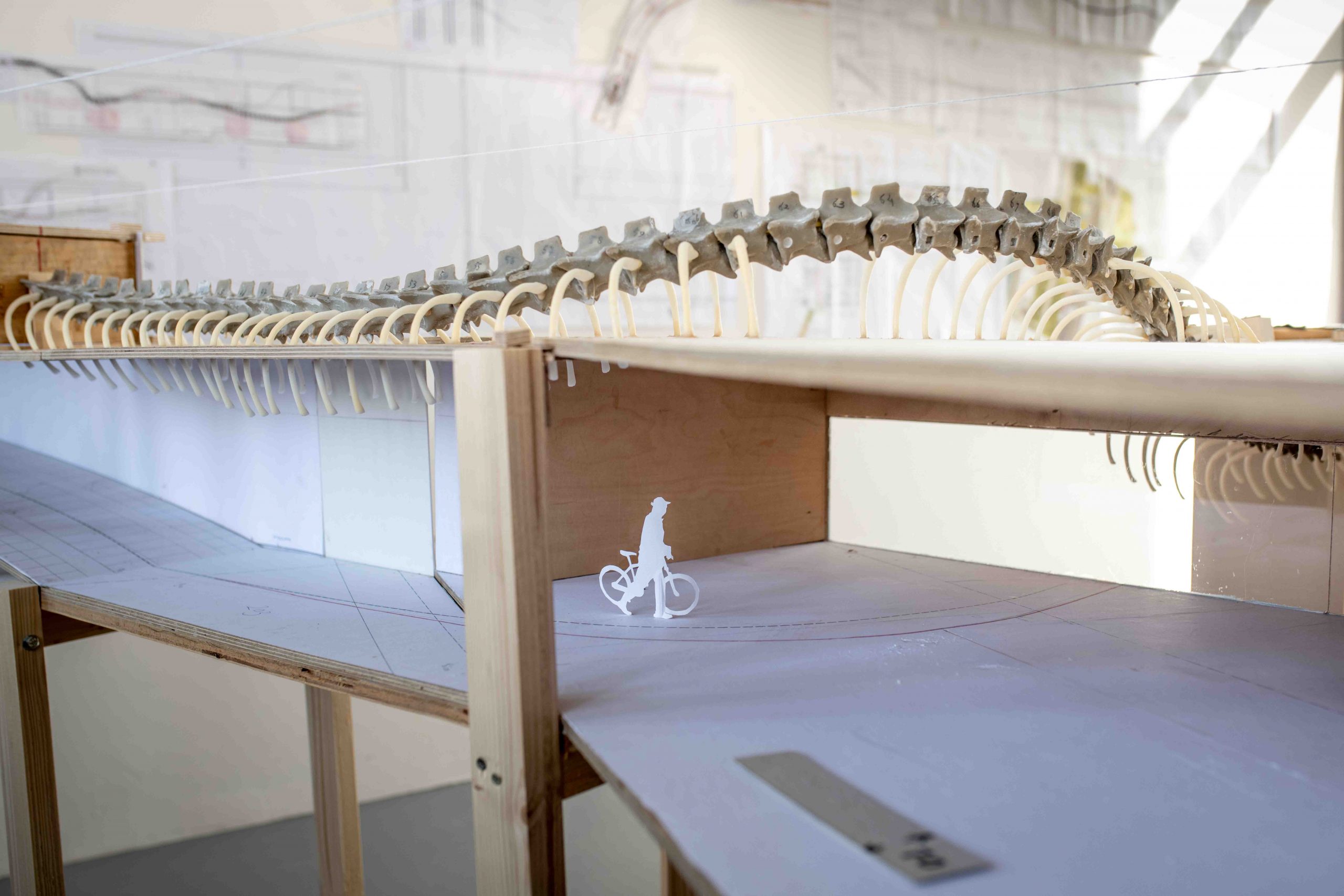For Linnaeus University in Kalmar, artist Pia Sandström has created A Place for Thinkers and A Landscape from the Middle of the Sea (Tools for Seeing) inspired by the city and the sea. Both of Sandström’s artworks bring the site’s geology, characteristics and history into focus. The original title in Swedish is Plats för tänkare and Landskap från Havets mitt (Verktyg för att se).
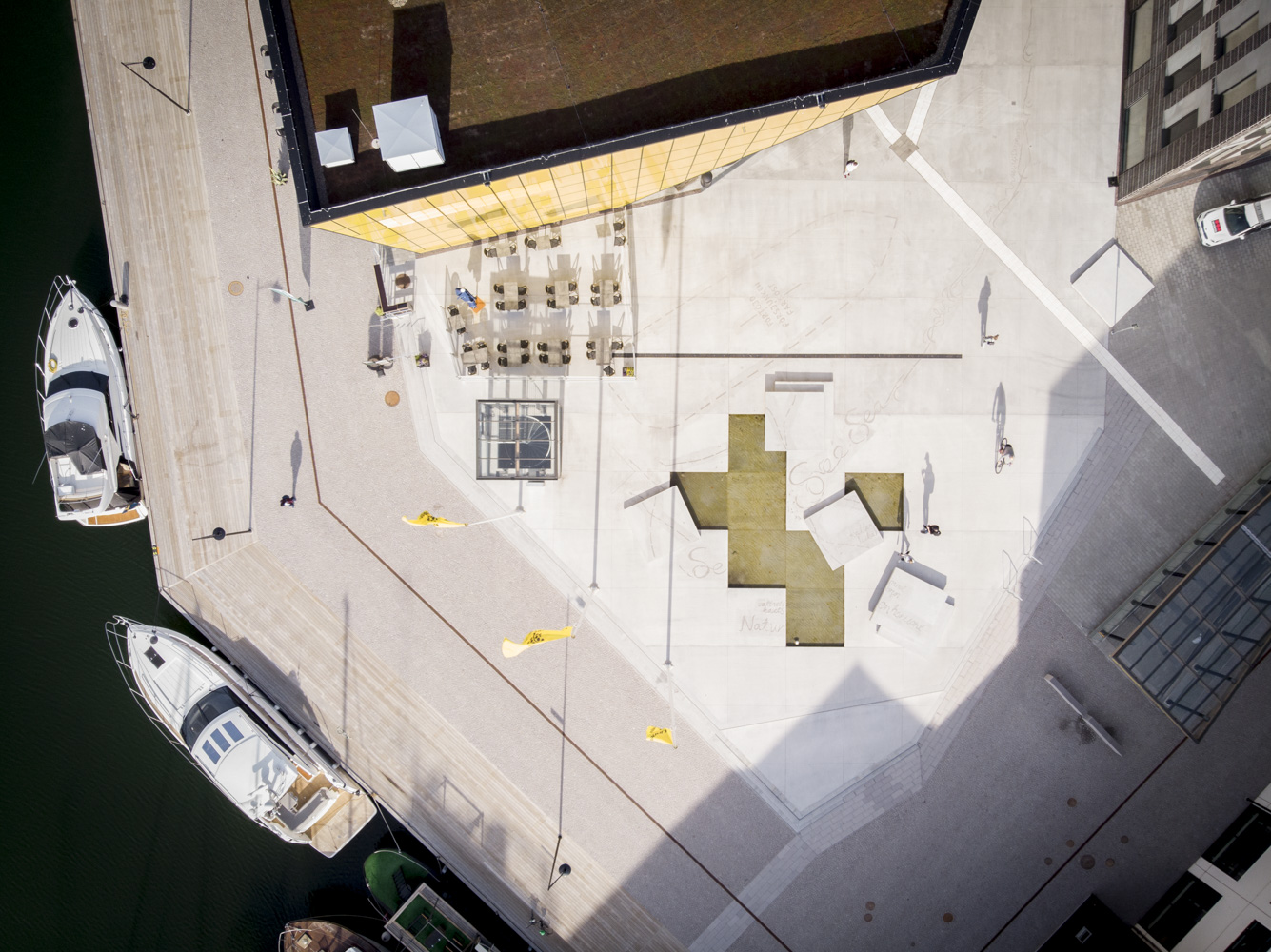








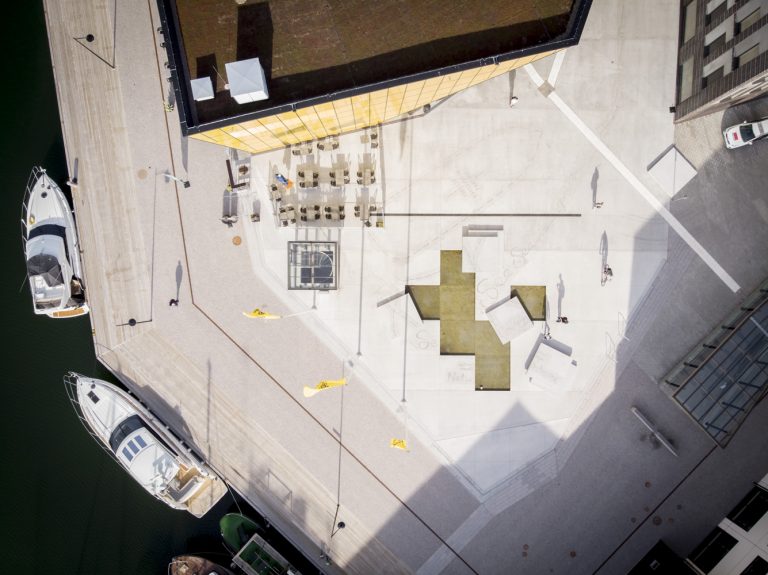

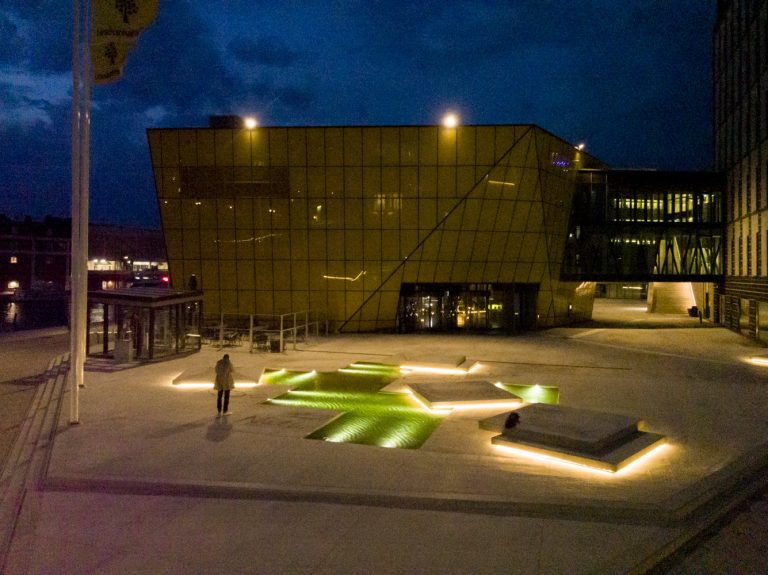
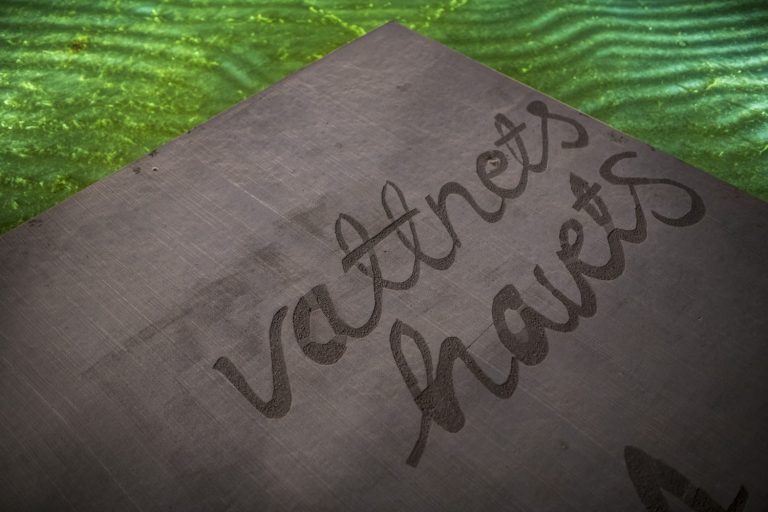
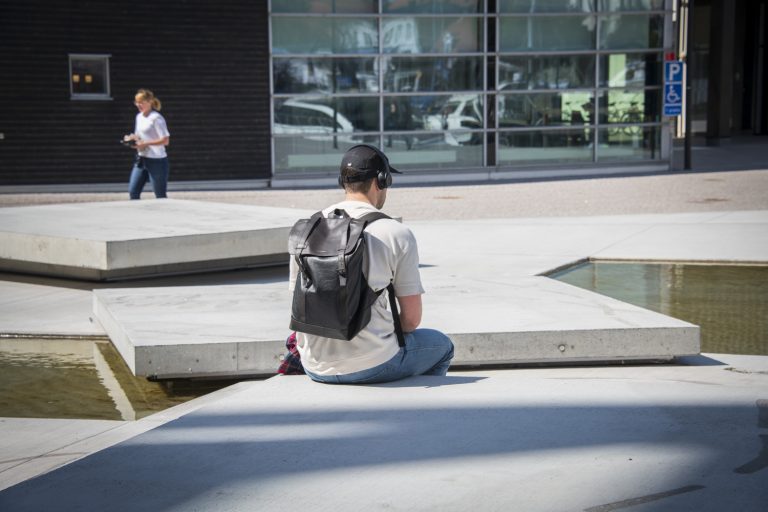
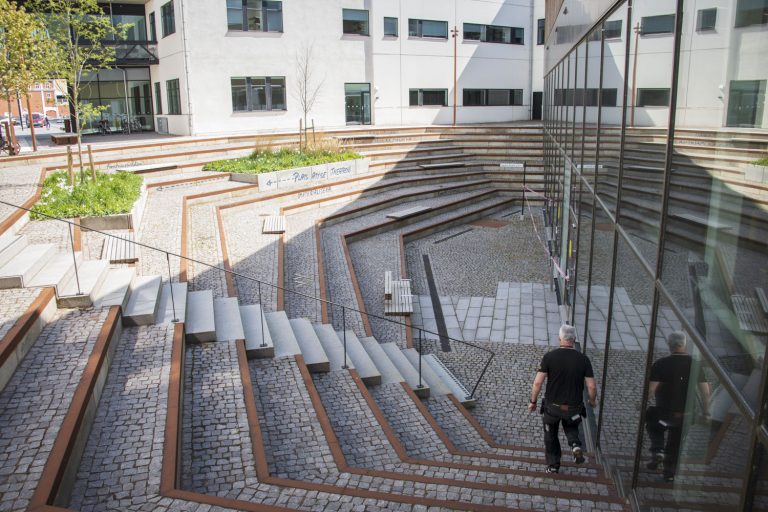
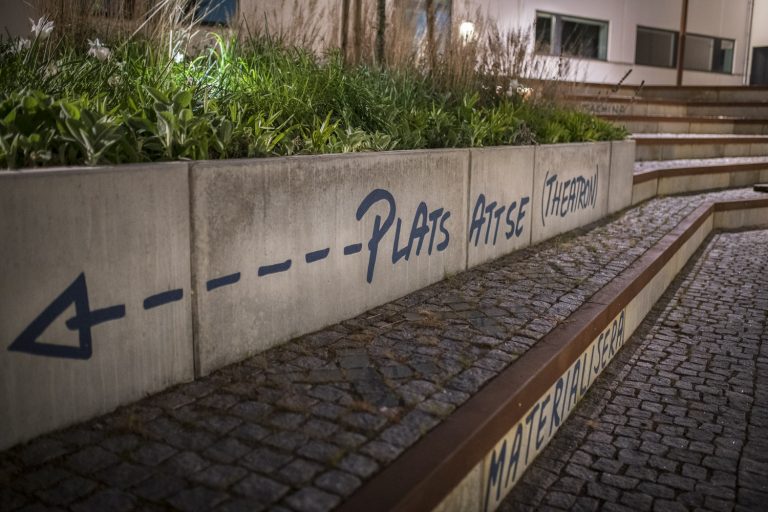
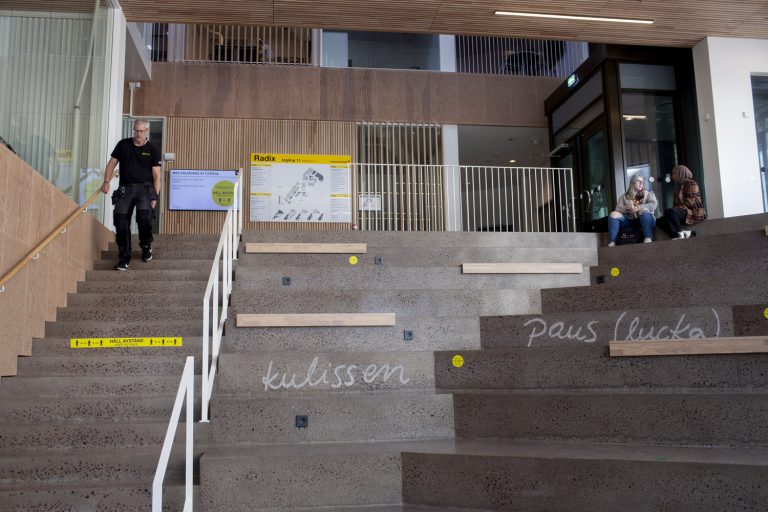
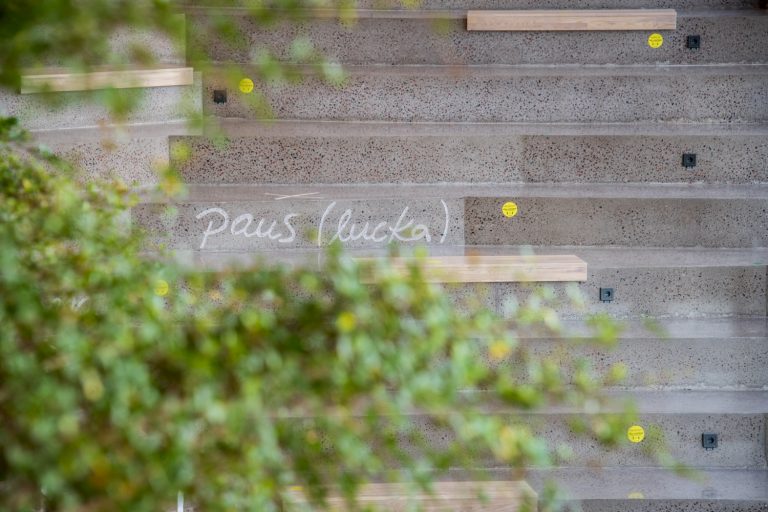
Pia Sandström was inspired by ancient theatre and everyday drama in creating A Place for Thinkers, an artwork composed of letters and signs in relief, formed into serious and humorous sentences. Installed both inside and outside of the Radix building, it ensures that students will be surrounded by art.
Pia Sandström’s artwork A Landscape from the Middle of the Sea (Tools for Seeing) dominates the square of Universitetsplatsen. The work is composed of a concrete grid, ponds and reliefs that refer to Kalmar Strait and historical Kalmar. The concrete also relates to a 17th-century shipwreck that is buried under the square. Sea water pumps located in the centre of the grid pump sea water onto the square and become a part of the site.
Curator Kristina Möster Nilsson on the Artworks
Linnaeus University in Kalmar is embedded in a web of heritage environments. Landscape and architecture create a unique urban rhythm. The newly constructed university is encircled by Kalmar Castle, the Art Museum, the City Wall, the Port, the Byteatern, Kalmar Strait and the island of Öland in the distance. Located at the centre of the university, Kalmar’s new square, Universitetsplatsen, comprises an artistic intervention that transforms the square into a tool with which to navigate the university and read the city.
Art in Two Acts
Artist Pia Sandström has carried out an integrated artistic commission in conjunction with the construction of the new city district that is Linnaeus University. Sandström’s art may be experienced in two acts. Act One is A Place for Thinkers in the Radix building. Act Two is Universitetsplatsen with A Landscape from the Middle of the Sea (Tools for Seeing). From A Place for Thinkers, letters and signs in relief are dispersed through a series of steps, both inside and outside the building. Students will be surrounded by art. The tactile signs create meaning, serious and humorous. In this, the smaller act, everyone can approach the language of dramatic narrative – deus ex machina, the chorus of complaint, pause (gap) – and become an actor of the everyday. Alternatively, one may lose oneself in thought or study. The idea of ancient theatre and everyday drama is the foundation of the development of A Place for Thinkers. Act Two took a completely different route.
Act Two is A Landscape from the Middle of the Sea (Tools for Seeing), a square composed of concrete, drawings and sea water ponds. The artistic intervention was developed as a process with the point of departure in the university as a site. Early in the sketch work, Sandström established collaborations with experts in landscape architecture, history, maritime transport, aquatic ecology and, not least, with researchers at the university’s laboratory. Linnaeus University carries out cutting-edge research in, among other things, the survival of the oceans. In this process, Sandström highlighted the site’s ecology and its unique characteristics and history. Landscape architecture and materials were developed in close collaboration between Skanska, Tengbom and the artist.
Movements on the Square
Universitetsplatsen’s relation to the city and the sea laid the foundation for a grid system of concrete. The grid spreads out across the square in the cardinal directions. The layout across the square may be read as a movement along longitudes and latitudes. The square system creates an understanding of the city, while sightlines and open surfaces support the reading. As do the sea water ponds. The sea water ponds are shaped as hollows from which square blocks have been removed from the concrete. The hollows of the raised squares become receptacles of water in harmony with the sensually wave-shaped concrete. The choreography is created both by people’s movements on the square and the water’s movement above and under the ground.
The sea flows in a circuit through the sea water ponds. The centre of the square’s water circuit is the university’s laboratory. From a point in Kalmar Strait, for the purpose of research, a pipe conducts cold water from the strait into the laboratory. From there, the sea water is conducted onto the square and then let back out into Kalmar Strait. It is an innovative method of circulating water and benefitting the urban architecture without straining local water resources. The coast of eastern Småland is characterised by periods of drought and low water table levels. An early request from the commissioners to have water integrated as a part of the square architecture provided Sandström with the solution, which coincided with her interest in the sea water research carried out in the laboratory. The water circuit is an artistically innovative solution that both supplies a holistic representation of what a university can be, and a perspective on how architectural living environments can be created in harmony with science and natural resources.
Times and Signs on the Square
The sketch work and the development of the artistic intervention entailed extensive drawing. Describing this phase of the work, Pia Sandström says: “By drawing I discover the world around me. It’s a way of exploring it. I create imagery in language.” The drawing was made permanent by skillful blasting. Signs and lines sweep across the square. The blasted signs reveal the ballast of the concrete and its tactile, rough surface. The signs communicate something of what is going on under the ground. In the area for “vessel” there is an actual 17th-century shipwreck buried under the concrete. Time sways back and forth and up and down across the square (for further information about the shipwreck, please consult Kalmar läns museum).
The daylight visualises the square’s rough concrete tones, the grid, the signs and the water. When darkness falls, the character of the site changes. The illumination appears to raise the blocks and make them float about in the port. The patterns in the ponds grow alternatively dark and light. The site is lent a more thrilling and dramatic rhythm.
A Web of Urban History
Universitetsplatsen together with Stortorget, the Valnöten block and several additional important sites create a web of Kalmar’s urban history. Pia Sandström was a highly relevant artist to invite to carry out a permanent artistic intervention in this context of artistically important heritage sites. Sandström had a history of exploring Öland and Kalmar in artistic depictions and had created a unique artistic archive of both theoretical and artistic practice. A Landscape from the Middle of the Sea (Tools for Seeing) is the last building block in a long-term construction of living environments in Kalmar. The experience amassed in Kalmar of contemporary artistic creation in collaboration with interdisciplinary values is exceptional from a national perspective.
Kristina Möster Nilsson
On Pia Sandström
Born in 1969, in Stockholm, where she lives and works, Pia Sandström was educated at the Royal Institute of Art in Stockholm, the Academy of Fine Arts in Helsinki and the Trondheim Academy of Fine Art. Sandström’s artistic practice spans several literary genres and 20th-century art history, which form the point of departure for her innovations while developing her artistic idiom. Since the early 2000s she has worked in a number of artistic techniques, including textile installation, book and sound art.
Sandström has conducted several projects related to Öland and Kalmar and assembled a unique artistic archive comprising historical facts, poetry and artistic experience from Kalmar Strait. Landscape and site have become an artistic method for Sandström, regardless of whether the art is presented at galleries or becomes part of a landscape. Sandström’s projects have been presented at, among others, GIBCA, Moderna Museet, Kalmar Konstmuseum and the Venice Biennale of Architecture. A Landscape from the Middle of the Sea (Tools for Seeing) and A Place for Thinkers are Pia Sandström’s most extensive permanent artistic intervention.
